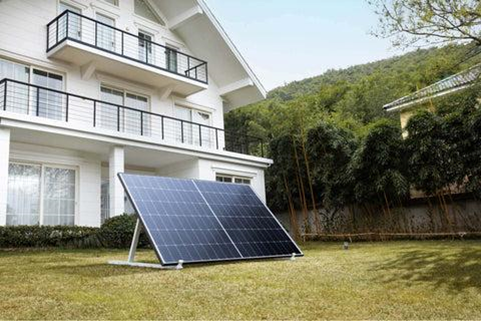Environmental influences persist in shaping our society with each passing second. Consequently, individuals across the globe are deliberating on the feasibility of transitioning to more cost-effective and ecologically sustainable energy sources. Solar panels are progressively gaining prominence as an integral element in the ongoing struggle for sustainable energy. Implementing this state-of-the-art solution makes it possible to convert the sun’s radiant energy into usable power. This effectively eradicates the need for fossil fuels and contributes to mitigating our collective carbon footprint. However, has anyone ever contemplated the complex arrangement of constituents that operate in unison within a solar panel? This article presents a concise guide that will assist you in understanding the fundamental components of solar panels. Additionally, it will facilitate your comprehension of the functions performed by these constituents in the endeavor to convert solar radiation into practical energy and establish a path toward a more sustainable future for all.

Components Comprising a Solar System
Backsheet
The back sheet layer operates inconspicuously in the background of the solar panel. This essential but ostensibly silent component shields the panel from external elements that attempt to penetrate it. When installed on the rear of the panel, it functions as a resilient barrier against temperature fluctuations, ultraviolet radiation, and humid environments. The back sheet, composed of materials that exhibit unwavering resistance, guarantees the preservation and safeguarding of the internal components of the solar panel throughout its entire operational lifespan. It provides protection against moisture, which could result in electrical disruptions and diminished performance. Acting as a knight in dazzling armor prevents the ingress of moisture into the system.
Mounting Structure and Frame
The frame is a fundamental pillar in solar panels, contributing to their structural integrity and enabling a smooth installation process. Although occasionally disregarded and undervalued, it functions as an essential support framework. The frame, constructed from robust materials such as aluminum, enhances the panel’s perception of resilience and functions as a mounting mechanism. This critical attribute enables the secure fixation of solar panels to various surfaces, from the rooftops of residential structures to massive ground-based installations. The panel’s longevity is ensured by the frame’s durability, which enables it to withstand environmental and temporal stresses while retaining its effectiveness and dependability throughout its operational lifecycle.

Monocrystalline Silicon Solar Panels
It is believed that the photovoltaic cells contained in each solar panel are the most vital component. On the contrary, monocrystalline silicon solar panels are the most effective. The unprecedented efficiency with which these cells convert sunlight into energy is because they are composed of a single crystal lattice of silicon. Due to their consistent crystal structure, electron resistance is reduced, thereby facilitating the attainment of maximum energy conversion rates. Due to their outstanding operational capabilities and streamlined aesthetics, monocrystalline panels are the most viable choice for an extensive array of applications.
Wiring and Junction Box
Despite its seemingly inconsequential appearance, the junction box is integral to the solar panel’s connectivity architecture. Situated discreetly at the rear of the panel, this diminutive enclosure is tasked with generating a complex cabling network that will link the photovoltaic cells. The platform’s functionality facilitates the uninterrupted transmission of generated power as an efficient junction for these connections. Bypass diodes are installed in junction boxes in a variety of circumstances. By controlling the passage of electrical current, these diodes reduce shadow-induced losses. Consequently, they assume a pivotal function in regulating the panel’s power supply to the external infrastructure.
Conclusion
If you plan to buy balcony power plant, acquiring knowledge regarding the intricacies of solar panel components can be likened to uncovering the remarkable scientific principles that govern using the sun’s boundless energy. Each constituent holds considerable importance: the intricately crafted monocrystalline silicon cells serve as the primary catalyst for converting solar energy into electrical energy, whereas the structural and protective components labor to preserve the system’s efficacy throughout its lifetime. The importance of a firm grasp of these technical intricacies is growing as we progress toward more ecologically responsible activities.
